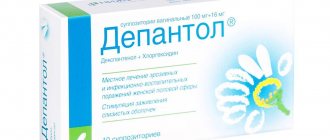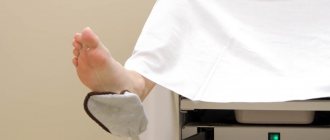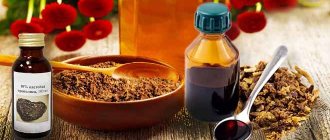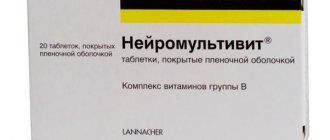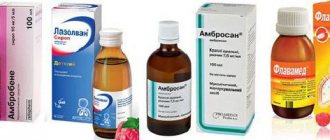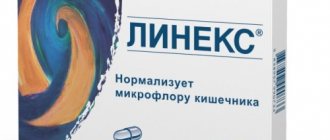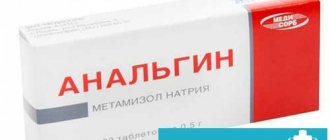Chamomile or medicinal chamomile is a ubiquitous annual of the genus Matricaria of the Asteraceae family. The plant can be found on various soils in Eurasia and North America and other extratropical regions of the earth. From Latin the name is translated as Uterine Herb, since previously it was used mainly to treat female diseases.
The once wild plant is now actively cultivated by humans, providing medicinal value and being a sought-after medicinal raw material. In addition to the active component of many medicines, it is part of shampoos, creams, lotions, soaps and other cosmetics.
Does chamomile decoction help with ARVI, including influenza?
For influenza and other acute respiratory viral infections, a decoction of chamomile is useful for easing sore throats and easing the symptoms of a runny nose. For this purpose it is used only topically:
- For sore throat, gargle with chamomile decoction. These procedures help to reduce inflammation and sore throat and resolve it more quickly. They do not give an immediate result, but when compared with treatment without such rinses, they can reduce the duration of the pain syndrome by 1-2 days and generally alleviate the patient’s condition;
- To relieve a runny nose, rinse your nose with the decoction. This allows you to wash out some of the mucus and facilitate its flow out naturally, helps to moisturize the surface of the inflamed mucous membrane and reduce inflammation. In some cases, with proper rinsing, a patient with ARVI does not have to drip vasoconstrictors into the nose;
- To reduce inflammation in the upper parts of the respiratory tract, inhalations with chamomile decoction are performed. However, there is no particular point in them, since, in fact, the components of chamomile do not penetrate deeper than the nasopharynx, and it is easier to introduce them here, either by simply dripping the decoction into the nose (for small children), or by rinsing it (for adults). Doing inhalation with chamomile decoction using a compressor, ultrasonic inhaler, or nebulizer is strictly prohibited by the instructions for using these devices.
Such inhalations must be carried out with great caution due to the risk of scalding and because they are contraindicated for bacterial infections.
At the same time, for influenza and other acute respiratory viral infections, there is no point in drinking chamomile decoction. When it enters the digestive tract, it does not cause any effect that may be useful for acute respiratory viral infections. However, it is known that chamomile can cause diarrhea, a very common disorder associated with certain types of viral infections. In particular, with rotavirus infection, diarrhea is the most terrible syndrome, which kills a large number of children around the world every year. Risking its development for the sake of taking chamomile is completely pointless.
A rotavirus virion that can cause an infection that will manifest itself first as digestive upset and then as respiratory syndrome.
There is an opinion that chamomile infusion can help reduce fever. This assumption has not been confirmed by anything; such properties of chamomile are not indicated in pharmacopoeias. To some extent, simply drinking liquid contributes to the normal regulation of temperature in the heat, but both regular tea and clean water can cope with this task equally. There is no point in force-feeding a chamomile decoction that is not the most pleasant to the taste.
How to prepare chamomile infusion
Method 1 - pour boiling water directly into the mug and let it brew under the lid for 10-15 minutes. Take 200 ml of boiling water for 2 teaspoons of dried flowers. Then the infusion is filtered through a strainer and used for its intended purpose. This method is the easiest and fastest, but it does not guarantee the extraction of the maximum number of nutrients from the plant.
See also: Cinnamon tea - how to prepare, the benefits and harms of the spicy drink
Method 2 – so-called "water bath". Pour 1-2 tbsp into a bowl. spoons of crushed plants, pour a glass of boiling water. The bowl is placed in another, larger pan, into which boiling water is poured, and closed with a lid. The pan is placed on the fire and boils for 10-15 minutes. At this time, steam from the boiling water at the bottom rises to the top, warming the bottom of the bowl and causing the water poured into it to practically boil. Then the pan is removed from the heat, and the infusion is left in the bowl for an hour or two. After this, you can strain and use as directed.
Method 3 – brewing in a thermos. Dried flowers and herbs are poured into a thermos and filled with boiling water, infused and simmered for 2-3 hours. This method is convenient for brewing overnight.
Using a decoction for prostatitis
Theoretically, chamomile tea can reduce inflammation of the prostate gland. This use is practically the only specific indication for taking chamomile decoction for men. The likelihood of such an effect is greater if enemas with chamomile and parallel massage of the prostate are performed for this purpose; the same result is less likely if chamomile is simply ingested for this purpose.
There is practically no information about the effectiveness of treating prostatitis (even symptomatic) with chamomile decoction.
At the same time, taking chamomile decoction does not affect prostatitis itself and its course. It is impossible to completely cure the disease with this remedy alone; it only helps to alleviate the symptoms. There is no evidence base for the treatment of prostatitis with chamomile. Therefore, the drug can be used for this disease only in parallel with the main treatment and only as directed by a doctor.
Does chamomile infusion help with heartburn and can it be used for GERD?
Chamomile infusion does not help with heartburn. There is no known mechanism by which chamomile could influence the activity of the lower esophageal sphincter or gastric acidity.
At the same time, to some extent, chamomile decoction, when taken orally, normalizes the functioning of the muscles of the stomach and intestines, due to which the general condition of a patient with gastroesophageal reflux disease can be alleviated. Heartburn will not go away completely, but the severity of GERD symptoms may decrease.
Inflammation of the female genital organs
The use of chamomile for vulvitis, thrush, vaginitis, endocervicitis, genital herpes and other diseases of the female genital organs is very widespread. As a rule, for this purpose, douching or washing is carried out with chamomile decoction.
Statistics show that for such diseases, chamomile decoction has virtually no effect on the course of the disease or on the general condition of the woman. Moreover, douching with it can contribute to the introduction of infection from the vagina into the uterus and subsequent inflammation of the uterus. At the same time, douching itself increases the risk of injury to the vaginal epithelium, disrupts the microbiological background here and is one of the risk factors for the development of cancer pathologies.
For cystitis and various gynecological diseases, chamomile can only be used internally, and douching is strictly not recommended.
To some extent, symptomatic treatment of female diseases, including those associated with inflammation and accompanied by itching and pain in intimate places, is possible. If itching develops specifically on the external genitalia, washing them with chamomile decoction can reduce the severity of the sensations and generally improve the patient’s condition. In these cases, the decoction is really useful. However, it is impossible to completely cure any such disease with the help of chamomile, and therefore its decoction is used only as a means for symptomatic therapy.
It is also useful to read: Tibetan balsam - birch buds, immortelle, St. John's wort and chamomile
It is absolutely clear that chamomile decoction will not help with diseases associated with various neoplasms. For example, it makes no sense to take it for ovarian cysts, cervical dysplasia and various benign formations - chamomile does not affect their growth in any way.
For the same reason, chamomile does not help with mastopathy, which is also associated with the appearance of cysts, but not in the genitals, but in the mammary glands.
Chamomile oil
Aromatherapy
Without having a pungent or exotic odor, chamomile oil is well tolerated by patients, including children and the elderly, has a positive effect on all organs and systems and disinfects indoor air. Meanwhile, you need to get used to it - not everyone likes the taste of bitterness. Add a few drops to the aroma lamp and conduct a 15-20-minute session, preferably in the evening.
Internal use
Take in a mixture with honey: 2 drops of oil per 1 tsp. honey twice a day for 5-7 days. Helps with reduced immunity, decreased appetite, ulcers and gastritis (not exacerbation), menstrual irregularities and menopause. Eliminates irritability, anxiety, stabilizes the emotional background. Activates memory, has a positive effect on mental activity.
Pregnant, lactating women and children under 6 years of age are prohibited from using its oil internally.
Outdoor use
Chamomile essential oil can be applied to the skin in its pure form, without dilution, but precisely to problem areas by applying a cotton pad soaked in oil to the skin for 5-10 minutes when:
- diseases of an allergic nature (eczema, dermatitis);
- inflammation after exposure to the sun or thermal burns (at the healing stage);
- insect bites;
- poorly healing wounds, ulcers;
- acne;
- acne;
- fine wrinkles;
- rosacea;
- ingrown toenail (at the stage of tissue healing after surgical treatment).
- alopecia, dandruff (in this case, the oil is rubbed into the hair roots for half an hour, then washed off).
Apply chamomile oil for 7-10 days in a row.
- Essential oil can be used to enrich any cosmetic products - creams, lotions at the rate of 3 drops of oil per 5 ml of product.
- Use the oil as a massage oil mixed with a base oil (for example, 5 drops of chamomile oil per 10 ml of olive oil).
- To aromatize baths, 10 drops, previously diluted in a base (warm milk, honey), are enough.
- It combines well with other essential oils, enhancing the effectiveness of the latter: bergamot, geranium, bitter orange, cypress, lavender, rose, sage, marjoram.
Gastrointestinal diseases
Diseases of the gastrointestinal tract, accompanied by abdominal pain and caused by inflammation, ulcers or muscle spasms, are the main indications for the use of chamomile infusion.
For example, WHO indicates the symptomatic treatment of gastrointestinal diseases and digestive disorders as the main indication for the use of chamomile decoction orally or in the form of enemas, the feasibility of which has been confirmed by special studies.
Degenerated epithelium of the gastric mucosa during gastritis - when taking chamomile, its regeneration and restoration of mucosal function are accelerated.
So, chamomile is used for:
- Gastritis (including with ulcer);
- Colitis, including its nonspecific ulcerative form (UC);
- Enterite;
- Dyspepsia;
- Bloating;
- Flatulence.
For these diseases, taking the decoction helps relieve abdominal pain, remove gases, normalize muscle contractions and eliminate spasms, and cleanse the intestines. It is taken as an adjuvant in the complex therapy of a particular disease.
As a rule, for gastritis, bloating, and dyspepsia, the decoction is taken orally; for colitis, enemas are done with it.
Antiseptic properties
Studies have shown that chamomile preparations are highly effective against several types of bacteria, including pathogens of dangerous human diseases: staphylococci, streptococci, the causative agent of leptospirosis, cariogenic bacteria. This effectiveness is shown only for “in vitro” conditions, but there is reason to believe that in the body, chamomile remedies also suppress bacterial activity to varying degrees. Due to this, chamomile is often used to treat bacterial lesions of the gastrointestinal tract (including when pathological amounts of Staphylococcus aureus are detected in the stool), for mouth rinsing to prevent caries, for intimate hygiene in women and men, and for the treatment of skin lesions - for disinfection of the body.
The antibacterial properties of chamomile are enhanced by various components of preparations containing it. For example, a chamomile tincture with vodka or alcohol has a much more pronounced effect than a water infusion or chamomile decoction, but such a tincture also causes more severe side effects, including those associated with possible burns from alcohol and alcohol poisoning. In such preparations, the benefits of chamomile are often offset by the harm from alcohol.
It is also useful to read: Can an allergy to chamomile develop and how chamomile itself is used against allergies
Likewise, it is pointless to try to obtain an antibacterial effect by adding honey or milk to a chamomile preparation. This is often done by parents who are preparing a mouthwash for their child - it is known that both honey and milk (especially breast milk) have an antiseptic effect. In reality, both honey and milk are ideal food for bacteria, and all the antibacterial properties of chamomile will be useless if the product with it actively feeds microbes when rinsing your mouth or throat.
Chamomile decoction for gout
For gout, chamomile infusion is practically useless. There is no reason to believe that foot baths with it, lotions or oral use could affect the deposition of salts in gout or in any way reduce the severity of its attacks.
It is unlikely that such manifestations can be weakened or completely eliminated with the help of chamomile.
Cholelithiasis
The advisability of taking chamomile decoction for cholelithiasis is a subject of debate.
On the one hand, chamomile is known to cause a slight choleretic effect. On the other hand, taking chamomile does not have a pronounced effect on the course and symptoms of gallstone disease. There are no known cases where the use of this remedy would significantly improve the patient’s condition or promote the dissolution of stones in the gallbladder.
Gallstone disease is one of the indications for taking chamomile in folk medicine, although in fact there is no evidence of the effectiveness of chamomile decoction for it.
In any case, today it is reliably known that sandy immortelle is many times superior to chamomile in its choleretic effect and benefits for cholelithiasis. Taking chamomile infusion for this disease cannot be considered advisable.
Does chamomile help with late periods?
It is reliably known that chamomile can stimulate the activity of the uterine muscles. Due to this, its decoction is often drunk to speed up the onset of menstruation, especially when it is delayed.
However, this property must be used very carefully. In some cases, a delay in the onset of menstruation can be caused by pregnancy, and stimulation of the uterus with chamomile can lead to miscarriage. Sometimes women even confuse the miscarriage itself too early with heavy periods. Therefore, when taking chamomile decoction to speed up the onset of menstruation, a woman needs to make sure in advance that she is not pregnant.
The effect of decoction on the condition of a woman during menopause
If menopause is severe, a woman may really need a chamomile decoction. Providing a mild sedative, calming, relaxing effect, it helps to reduce the symptoms of “hot flashes” - headaches, pressure surges, emotional outbursts.
The photo shows the same decoction that you can drink 1-2 times a day instead of tea:
At the same time, the effect of chamomile on the nervous system is not as pronounced as, for example, St. John's wort, and therefore, when deciding whether to take traditional medicine, a woman or her doctor must assess the severity and severity of symptoms in order to correctly choose a more appropriate drug.
Features and uses of chamomile tea
Sometimes taking chamomile inflorescences can cause significant harm to the patient's health. This scenario is possible if:
- Uncontrolled use;
- Violation of dosages;
- Having allergies.
Chamomile tea for colds
Inhalations with an infusion of this medicinal plant are used positively for the treatment of respiratory diseases, influenza and acute respiratory viral infections. To prepare the inhalation, you need to brew two tablespoons of inflorescences in three hundred grams of boiling water and let it brew for several minutes, after which the resulting solution is poured into the inhaler.
Inhalation with chamomile
To treat a sore throat, a chamomile rinse will be useful, for the preparation of which you need to brew several tablespoons of the flower in boiling water, then bring it to readiness in a water bath.
The resulting infusion should be used to gargle for a week. The procedure can be performed up to ten times a day.
Also, drinking one cup of chamomile tea with breakfast for two weeks will strengthen the immune system and significantly speed up the recovery period after suffering from infectious diseases.
Calms stress
Drinking chamomile tea during a stressful period allows you to effectively relax, improve the quality of sleep, and speed up the recovery process.
Also, regular consumption of chamomile helps lower blood sugar levels, eliminates the feeling of constant fatigue and reduces the incidence of nervous disorders associated with diabetes.
It is necessary to drink tea every morning before breakfast, for one to two months during periods of particularly strong neuropsychic overload.
Chamomile tea for women
Taking chamomile-based drinks will be useful for women to stabilize the cycle, ease menstruation, relieve cramps and relieve pain.
Chamomile tea for men
Taking chamomile infusion will be useful for men suffering from inflammatory diseases of the prostate gland.
To achieve a therapeutic effect, the infusion must be taken once a day for one month.
Strengthening the immune system
Regular consumption of chamomile tea helps strengthen the body's immune defense, stabilize well-being, treat chronic fatigue, increase performance and significantly improve well-being.
Chamomile tea is one of the remedies that quickly boosts immunity.
Chamomile tea for children
In pediatrics, chamomile-based preparations are used to increase the child’s body’s resistance to viral bacterial infections, treat the gastrointestinal tract, and normalize the sleep-wake cycle.
Can only be used on the recommendation of a pediatrician.
For pregnant
Taking chamomile-based medications is allowed only during normal pregnancy. In this situation, the use of this plant helps to reduce emotional excitability and normalize the functioning of the gastrointestinal tract.
When breastfeeding
The use of chamomile when feeding a baby helps:
- Increased breast milk production;
- Improving immune defense;
- Relief of inflammatory processes.
Chamomile tea is considered the most affordable in the retail chain and price category and allowed during a woman’s lactation period.
The benefits of chamomile decoction in cosmetology
Chamomile is widely used in both clinical and aesthetic cosmetology.
In particular, its decoction has a pronounced anti-inflammatory effect against acne, excessive sweating, and the appearance of characteristic black spots on the skin. To combat these problems, masks and lotions with chamomile are used.
For example, in the photo there is a typical problem of “blackheads”, which can be partly solved through the regular use of lotions and washes with chamomile:
Chamomile decoction is also used to wash hair - it provides a slight yellowish coloration. There is also a known recipe for a remedy made from egg yolk, honey, almond oil and chamomile decoction, in which a lotion is moistened and applied to the face for 20-25 minutes. After this procedure, the skin becomes matte and smoother.
At the same time, with swelling on the face or different parts of the body, chamomile decoction practically does not help. Some diuretic effect of chamomile is supposed, but it is weakly expressed and in practice, chamomile decoction does not allow you to get rid of edema or even reduce its severity.
Beneficial properties of chamomile infusion
Effects of chamomile on the human body:
- antiseptic,
- anti-inflammatory,
- hemostatic,
- astringent,
- painkiller,
- sedative,
- anticonvulsant,
- bile and diaphoretic.
Chamomile has both medicinal and cosmetic uses. This is one of the oldest cosmetics, proposed by Hippocrates and used by beautiful Florentine women in their arsenal.
Dermatological diseases
The anti-inflammatory activity of chamomile is widely used in the treatment of various skin diseases. Among them:
- Dermatitis;
- Eczema;
- Cuperosis of various etiologies;
- Rosacea;
- Burns;
- Allergic rashes.
The main ability of chamomile used in such syndromes is anti-inflammatory, allowing to reduce the severity and pain of the rash.
With them, lotions or simple rubbing with chamomile on inflamed or damaged areas of the skin helps to reduce inflammation and its manifestations, as well as faster regeneration of damaged tissues. The decoction is also useful for reducing the severity of itching.
On a note
When treating allergic rashes with chamomile decoction, great care must be taken. Chamomile itself can cause allergies or intensify an already developed reaction. Therefore, you can lubricate rashes with its decoction from small areas and apply small amounts of the product. If the decoction does not aggravate the allergy, you can gradually increase the intensity of treating the rash with it.
To some extent, chamomile decoction helps to reduce the manifestations of diathesis if it is prescribed to children for external use. In this case, the product allows you to reduce the severity of hyperemia and inflammation of the skin.
It is also useful to read: Morenazal with chamomile and the rules for its use in children and adults
Cosmetological use
The anti-inflammatory properties of chamomile are widely used in cosmetology for the manufacture of:
- creams;
- toothpaste;
- decorative cosmetics;
- shampoos.
Today, chamomile is widely used in salon procedures to eliminate acne and acne (one of the basic medicinal herbs).
For hair care
Chamomile is indispensable for strengthening hair, giving it a healthy shine and normalizing fat metabolism in the scalp. Recipe examples:
- 1 tbsp. l. chamomile flowers pour 100 ml of water, bring to a boil, let it brew. Can be added to regular shampoo.
- 1 tbsp. l. flowers inflorescences, 1 tbsp. l. celandine pour 200 ml of water, bring to a boil, let it brew. Rub into the scalp and distribute the remainder over the entire length of the hair.
Can be used as a dye. Its effect is better seen in blondes. The hair becomes noticeably lighter and acquires a golden hue. Dark hair is given a copper tint.
For facial care
Chamomile infusions for the face are used for:
- elimination of keratinized epithelium;
- cure irritation, redness and peeling of the skin;
- eliminate skin laxity and give it tone;
- elimination of allergic reactions.
Some people prepare them themselves, using the broth as a base and adding various ingredients to taste. Options for using chamomile infusion:
- various masks;
- wiping your face with an ice cube;
- washing with the solution in the morning and evening.
There are many products on the market containing chamomile (creams, scrubs, lotions, makeup removers).
For skin pathologies on the body
Cosmetologists recommend using a concentrated infusion to relieve manifestations of skin pathologies:
- dark circles and bags under the eyes;
- increased sweating of the palms and soles;
- puffiness and swelling of the skin as a result of allergic reactions;
- itching and redness of the skin in different areas (psoriasis, eczema).
To make an infusion, you can use the entire above-ground part of the plant. Recipe options:
- Pour 500 grams of chamomile (stems, leaves, flowers) into 1.5 liters of water and keep it boiling for 10 minutes. Leave for 3-4 hours.
- 200 grams of flowers, 100 grams of celandine raw materials, pour 1 liter of water, boil for 10 minutes. Leave for 2 hours.
Can be used as baths, overhead masks, compresses. The duration of the procedure is on average 20 minutes.
Decoctions and infusions of the plant are often added to intimate hygiene products, where the skin is especially sensitive (elimination of irritation, burning and rashes).
Cream recipe:
Pour 100 grams of chamomile flowers into 250 ml of water and steam in a water bath for 20 minutes. Strain. Add 2 tbsp. spoons of oil (olive, vegetable, almond), grate baby soap as a base. Dissolve all ingredients in a water bath.
In addition to handmade cream, there are plenty of ready-made intimate hygiene products with chamomile on the shelves.
Contraindications
Despite all the usefulness of the plant, there are a number of contraindications for which the use of chamomile products is not recommended:
- with antacid gastritis;
- with individual intolerance;
- during inflammatory processes on the skin in the acute phase.
If any manifestation of intolerance occurs, you should immediately stop use and consult a doctor.
Chamomile decoction for toxicosis
For various poisonings, chamomile infusion is of little use. It does not neutralize toxins, does not accelerate their elimination from the body, and therefore its use does not provide any pronounced effects.
It is very important to use chamomile to treat diseases of the digestive tract, and not randomly collected herbs of little use that are similar to it - nivaria, pyrethrum and others.
At the same time, it cannot be used in case of toxicosis in a pregnant woman because it is contraindicated during gestation.
Chamomile: description of the plant
The herbaceous plant has an average height of 20-40 cm; a large stem length indicates a lack of sunlight during the growth period. The stem is thin and erect, hollow inside. The leaves are 2-5 cm long and have an alternate arrangement, sitting on the stem. The narrow-linear leaf has typical dissections with pointed lobes. The root is taproot, practically unbranched, thin. Small flower baskets have white petals on the edge and yellow tubular flowers in the middle.
Distinctive features of chamomile from its other types
The petals on the flower basket of chamomile are horizontal or drooping down. The receptacle itself has a characteristic conical convex shape. The head of the flower is hollow.
Insomnia
Insomnia, various stresses, anxiety, and anxiety are typical indications for taking chamomile infusion orally. In these diseases, chamomile has a pronounced calming, relaxing effect, helps normalize the patient’s emotional state and improves the quality of sleep.
For insomnia, this decoction should be drunk 1.5-2 hours before bedtime.
Patients suffering from insomnia, when regularly taking chamomile infusion, report easier sleep and a gradual abandonment of pharmaceutical sleeping pills. Moreover, in some cases, when used correctly, chamomile infusion is more useful than strong pharmaceuticals.
Benefits of chamomile for bronchitis and pneumonia
For bronchitis and pneumonia, chamomile infusion practically does not help. This is due to the fact that steam inhalations with it do not allow treating the area of inflammation - the bronchi and pulmonary alveoli, since the components of chamomile settle in the upper respiratory tract. And when taken orally, the effect of the active substances from chamomile on the bronchi is either completely absent or very insignificant.
Chest X-ray for bronchitis - here it is almost impossible to deliver chamomile to the site of inflammation.
In inhalers and nebulizers, which allow the delivery of a working solution to the lower respiratory tract, the use of chamomile decoction is prohibited.
However, there are numerous reviews that steam inhalations with chamomile helped a patient with bronchitis. This is easy to explain: the vast majority of bronchitis is viral in nature and does not require the use of special means at all. With them, even without treatment, the disease will go away on its own, but patients or parents of sick children who used inhalers are convinced that it was such diligent treatment that ensured normal recovery.
Chemical composition of chamomile
Chamomile flowers:
- coumarins (herniorin and umbelliferone);
- derivatives of bioflavonoids apigenin, luteolin and quercetin;
- polyine compounds;
- unbound organic acids (caprylic, anthemisic, isovaleric, salicylic);
- phytosterols;
- polysaccharides;
- vitamins (C, nicotinic acid);
- carotene;
- proteins, tannins.
- gum, mucus, bitterness.
Dry baskets contain up to 1% (0.1-0.8%) essential oil, which is called chamomile. The oil is blue in color and characterized by a rich composition. The most valuable component is azulene chamazulene, the content of which ranges from 1-9%. Chamazulene is synthesized from the lactones matricin and matricarin during the process of steam distillation of raw materials. It has pronounced anti-allergenic, anti-inflammatory and bacteriostatic activity.
Up to 50% of the composition are other sesquiterpenoids: farnesene, bisabolol, monoterpene myrcene, etc.
Sinusitis and other inflammations of the sinuses
For sinusitis and other sinusitis, chamomile decoction is sometimes prescribed for rinsing the sinuses at home. However, such washing is a very complex and rather unpleasant procedure, and its complexity significantly exceeds the possible therapeutic effect. Chamomile can neither cure sinusitis nor eliminate its cause, and all that can be achieved by using it is a slight reduction in the amount of mucus secreted, easing inflammation and pain in the head. Such effects do not in any way compensate for the difficulties in properly performing sinus rinses, and therefore it is better to avoid such procedures.
X-ray for sinusitis - here it is also difficult to treat areas of inflammation with chamomile decoction.
Taking chamomile orally does not help with inflammation of the sinuses.
Candidiasis
Chamomile decoction is widely used in folk medicine to treat vaginal candidiasis (thrush) and fungal infections of the mouth or throat.
At the same time, special studies have shown that pharmaceutical chamomile has virtually no effect on fungal infections . Its use in patients with candidiasis gave a result identical to the result when using a placebo, and therefore no mention of the antifungal activity of chamomile is found in modern sources.
It is almost impossible to eliminate such fungal infections with chamomile.
At the same time, many women actively use chamomile decoction for douching for thrush. As we have already found out, such procedures are very dangerous, but due to the lack of antifungal activity in chamomile, they do not help cure this disease and do not even have a symptomatic effect.
As a result, it makes no sense to use chamomile for this disease.
Likewise, chamomile decoction does not help when trying to treat nail fungus with it, when special baths with this remedy are prepared for the feet or hands. Such procedures only have a distracting effect.
General information
General information
How to distinguish pharmaceutical chamomile from ordinary chamomile? The chamomile has a receptacle (yellow core), elongated, extended upward, and hollow inside.
An annual plant, up to 60 cm high. It has a fragrant smell. Blooms from May to September. It grows in places uncultivated by people.
Flowers are used for medicinal purposes . The flowering baskets are not collected, but are collected when the petals are positioned horizontally. Collected in dry sunny weather.
Dry in a warm, dark, dry, well-ventilated place , spread out in a thin layer, turning over and turning occasionally. Artificial drying is carried out at 40 degrees. Chamomile is stored in paper bags.
Chamomile flower composition
Essential oils, chamazulene, flavonoids, bitterness, mucus, gums, proteins, coumarins, vitamin C, organic acids, polysaccharides, mineral salts.
Chamomile decoction for kidney diseases
It is believed that chamomile decoction helps to reduce various inflammations in the organs of the urinary system. There is also experimental evidence of this: when taking chamomile preparations orally, patients experienced a significant reduction in the severity of symptoms of inflammation of the kidneys or urinary tract. For this reason, chamomile is used in the complex treatment of pyelonephritis, urethritis, glomerulonephritis and even chronic renal failure, not only in folk but also in traditional medicine.
It is interesting that chamomile does not actually have diuretic activity and the effect of using its decoction will be the same as the effect of drinking clean water.
However, it is dangerous to rely only on chamomile infusion for kidney pain, especially for constant pain. By itself, it will not cure either acute inflammation or chronic disease, including chronic renal failure, and therefore chamomile can only be used for kidney disease with parallel complex therapy.
Contraindications
Despite the fact that many consider this plant to be absolutely harmless, contraindications for chamomile still exist. First of all, it is important to take into account the contraindications for women - chamomile is contraindicated for pregnant women, and nursing mothers should drink it with caution. People suffering from chronic diseases, as well as those taking vital medications, should consult a doctor before using decoctions, infusions or oils. It is also not used in case of individual intolerance.
Inflammation of the pharynx and throat
Another common use of chamomile is as a gargle for sore throat, chronic tonsillitis, abscesses, pharyngitis or laryngitis. During these procedures, chamomile provides a pronounced anti-inflammatory, mild analgesic effect and helps to moisturize inflamed tissues and cleanse them of pus.
With such obvious tonsillitis, gargling with chamomile decoction will help relieve pain and inflammation.
In most cases, with proper rinsing, chamomile decoction helps to shorten the duration of the pain syndrome by several days, and in the acute phase of the disease, reduce the severity of sore throat.
For the same purposes, chamomile is used to gargle for various dental diseases - caries, stomatitis, gumboil, periodontitis. The effect of these procedures is similar to gargling: the patient’s pain subsides, the severity and duration of inflammation somewhat decreases.
Finally, chamomile is used in folk medicine for many other diseases and syndromes: hangover, migraine, rheumatism, bronchial asthma, hemorrhoids, scrofula and malaria. It is difficult to even say under what condition chamomile infusion should not be used. However, in most such cases, its use turns out to be ineffective and is intended to a greater extent to convince the patient that he is being treated and will certainly recover. Indeed, the effectiveness of chamomile has been confirmed only for the above diseases.


